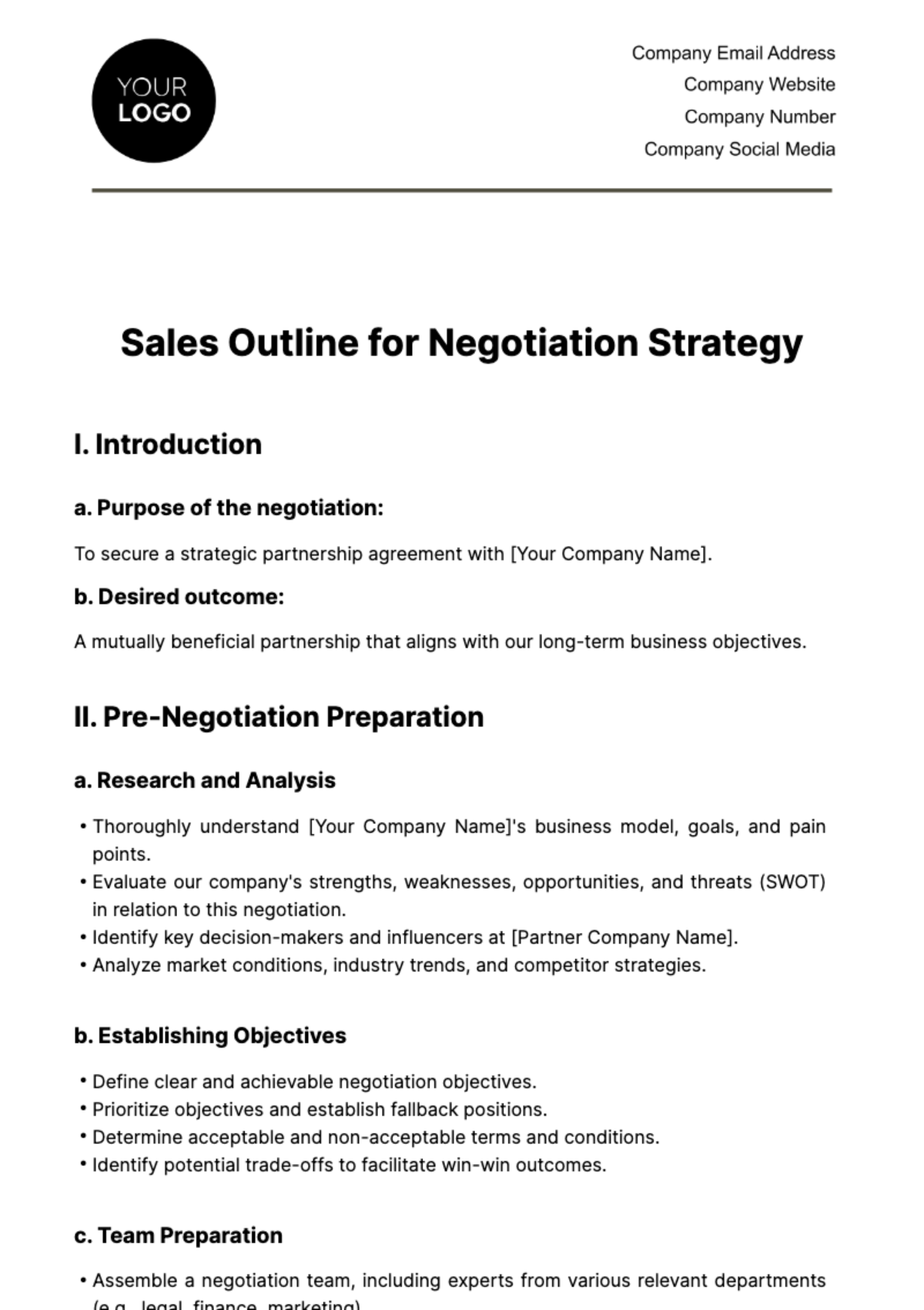Free Sales Outline for Negotiation Strategy
Introducing the Sales Outline for Negotiation Strategy Template by Template.net. Crafted to perfection, this template provides a structured framework for formulating effective negotiation strategies. It encompasses key elements such as objectives, tactics, and communication approaches, ensuring a comprehensive plan for successful sales negotiations. The template is now customizable and editable using our Ai Editor Tool.
